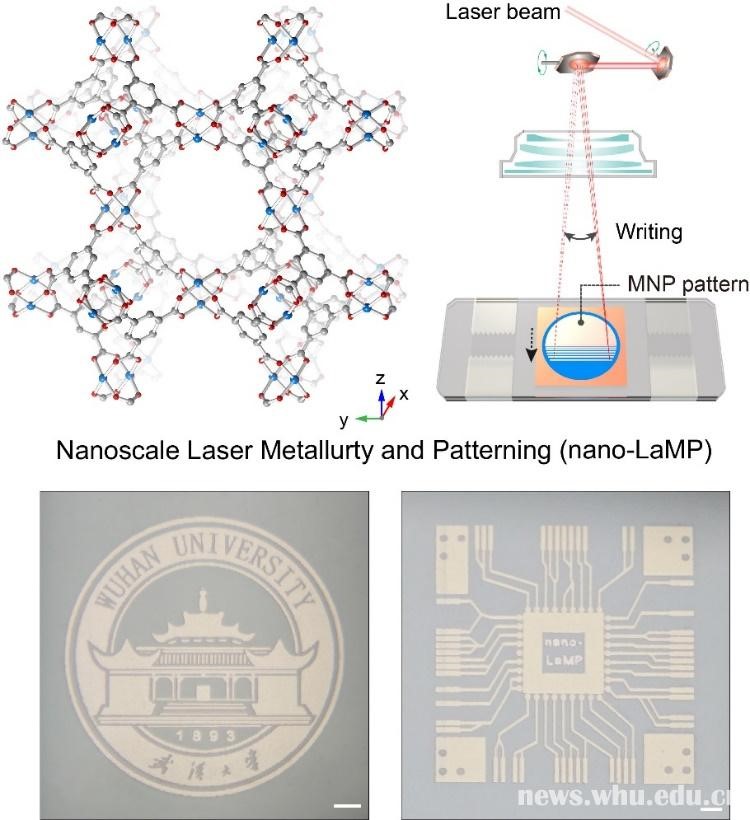Recently, the Journal of the American Chemical Society (JACS), an authoritative international periodical in the field of chemistry, published the research achievements of Professor Gary J. Cheng and Hexiang Deng. The paper which is titled "Nanoscale Laser Metallurgy and Patterning in Air Using MOFs", and whose first author is a postdoctoral called Jiang Haoqing, appears on the cover of 13th issue.
Metal nanocrystals are important raw materials for the preparation of optoelectronic devices. However, manufacturing techniques are complex and therefore hard to apply on a large scale. Being highly active and easy to oxidize, metal nanocrystals often need to be protected in solution, vacuum or inert atmosphere during the preparation process. Metal-organic Framework (MOF) as raw material, Prof. Deng from the College of Chemistry and Molecular Sciences, Wuhan University and Prof. Cheng's team from the School of Industrial Engineering, Purdue University successfully generated metal nanoparticles with uniform sizes using laser irradiation. With the program controlling the opening and closing of the laser as well as the movement of the light spot to prepare patterns, the wafer-sized chip composed of metal nanocrystals can be printed within dozens of seconds. The method is suitable for large-scale production because the whole process is completely carried out in the air, consuming less than 5 W of power.

MOF is constituted by metal and organic ligand containing carbon. At present, most studies focus on the organic components of MOF, but the abundant metal ions in the structure have not been fully utilized. Nano-LaMP (Nanoscale Laser Metallurgy and Patterning) is proposed in this work: using MOF as the raw material, the preparation of metal nanoparticles under air and synchronous pattern printing are realized. In the reaction process, metal ions and organic ligands, which are arranged in order, in MOF crystal serve as the metal source and reductant respectively. The nanosecond pulsed laser is responsible for precisely delivering the energy to the specified location, powering the metal reduction. After the MOF crystal’s efficient absorption of laser, the local high temperature is generated. Subsequently, the metal ions are rapidly reduced and ejected from the pores in the MOF, deposited on the substrate and instantly cooled to form metal nanocrystals.
Nano-LaMP can prepare the metal nanoparticles of Fe, Co, Ni, Cu, Zn, Cd, Im, Bi, Pb and their simultaneous patterning based on MOF crystal containing various metal ions, which presents its universality. Thereinto, the surface enhanced Raman effect chip, which is based on copper nanoparticles, and it provides extremely low detection limit (10-12m) in the detection of various biological molecules. With the combined advantages from both laser and MOF material, nano-LaMP is undoubtedly a new approach which is not only fast and flexible but also energy-saving and environment-friendly.
The work has been offered subsidies from the National Key R&D Program of China, the National Natural Science Foundation of China, the National Key Basic Research Program of China and the Innovation Team of Wuhan University, together with the support from the Test Center and the Large-Scale Instrument and Equipment facility of Wuhan University and the Shanghai Synchrotron Radiation.
paper link: https://pubs.acs.org.ccindex.cn/doi/10.1021/jacs.9b00355
Rewritten by: Qin Zichang
Edited by Zhang Shiqi, Shen Yuxi, Shi Weiya & Hu Sijia